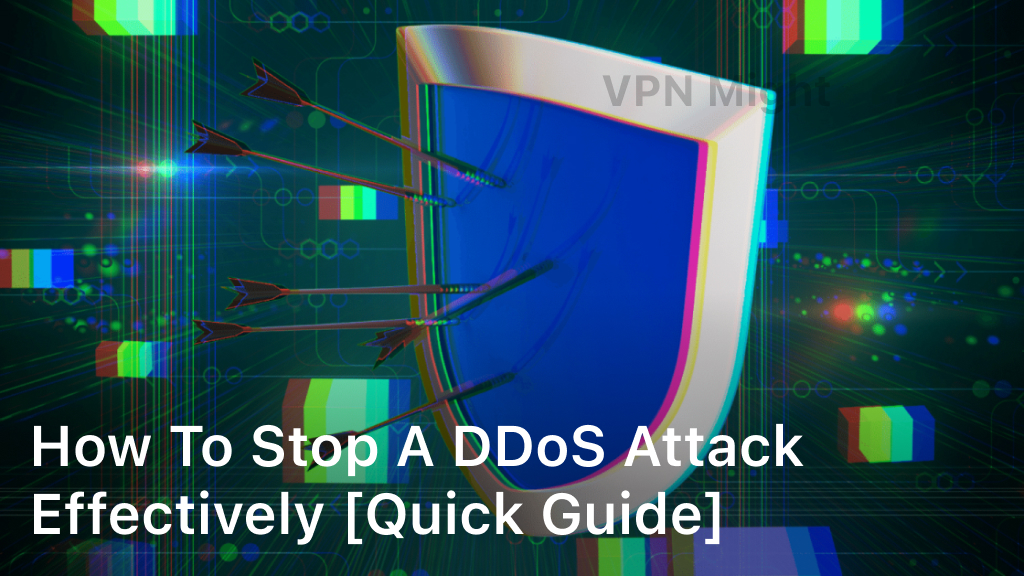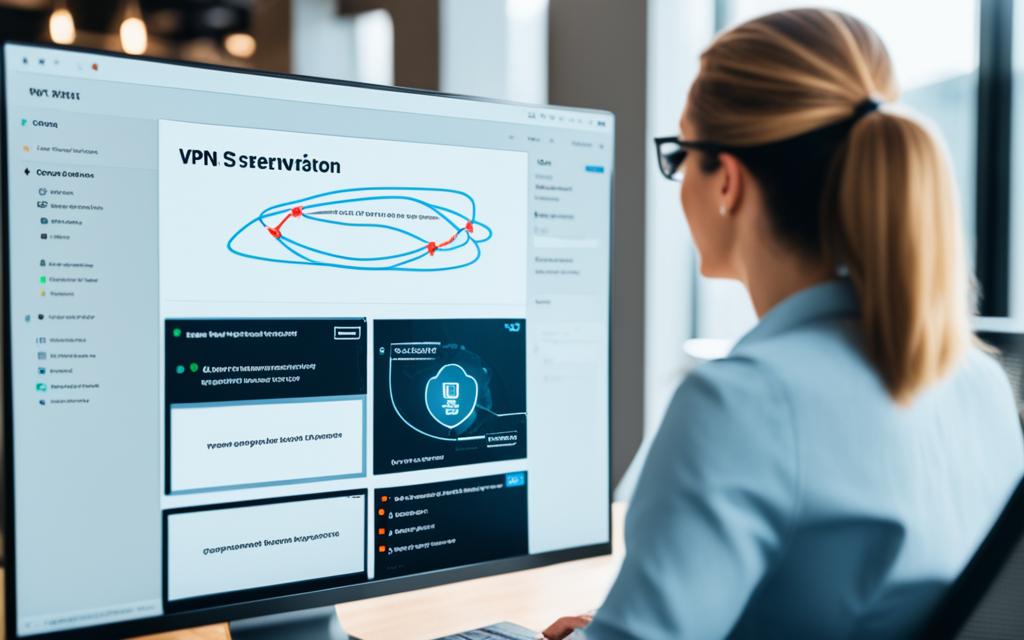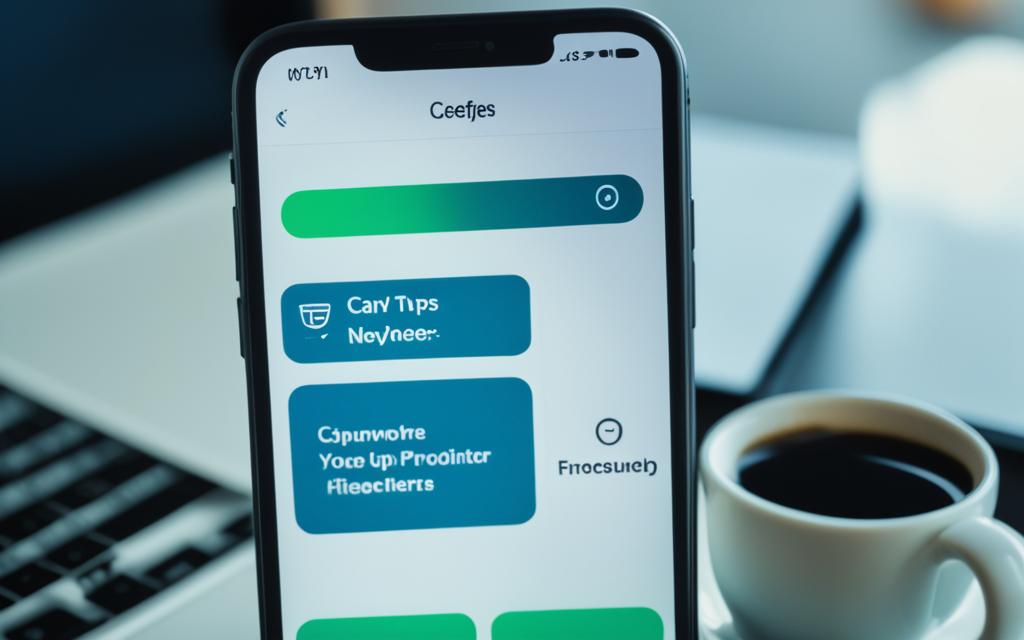How to Stop a DDoS Attack Effectively [Quick Guide]
Is your website or network prone to DDoS attacks? These malicious attempts to disrupt services can be highly disruptive, causing your users to experience downtime and negatively impacting your business. Fortunately, there are several ways to protect against DDoS attacks and prevent them from happening. In this quick guide, we’ll walk you through the essential steps you need to take to safeguard your online presence. From understanding the impact of DDoS attacks to recognizing the signs and implementing effective prevention and mitigation strategies, you’ll have all the knowledge you need to defend your network against malicious traffic. Protecting against DDoS attacks doesn’t need to be complicated, follow our prevention tips and stop DDoS attacks effectively today!
In this section, we will provide a quick overview of how to effectively stop a DDoS attack. It will cover the importance of protecting against such attacks and offer tips for preventing them. So, let’s dive in.

Understanding DDoS Attacks and Their Impact
DDoS attacks are a type of cyber attack in which multiple compromised systems are used to flood a target website or network with traffic, overwhelming it and making it inaccessible to legitimate users. These attacks can impact not only your website’s availability but also its reputation and financial standing.
To defend against DDoS attacks, countermeasures such as firewalls, intrusion prevention systems, and load balancers can be employed. These measures help to filter out malicious traffic and ensure that legitimate traffic can access the website or network.
It is vital to implement these countermeasures proactively, as DDoS attacks can be devastating to businesses of all sizes. Without proper protection, you risk experiencing lengthy downtime, lost revenue, and a damaged reputation.
How to Stop a DDoS Attacks
One effective way to defend against DDoS attacks is to employ a web application firewall (WAF). A WAF can identify and block traffic that does not meet certain criteria, such as requests that come from suspicious IP addresses or those that seek to exploit vulnerabilities in your website’s code.
Another countermeasure that can be taken is to use a content distribution network (CDN). A CDN distributes your website’s content to servers around the world, reducing the impact of a DDoS attack by spreading the traffic load. This can be done through traffic routing, load balancing, and intelligent caching.
Ultimately, the best defense against DDoS attacks is a multi-layered approach that combines several countermeasures. By adopting a comprehensive strategy, you can better protect your website or network from these malicious attacks.
Recognizing the Signs of a DDoS Attack
Knowing the common signs and indicators of a DDoS attack is crucial for protecting against and defending against such attacks. Some of the signs include:
- Slow website or network performance
- Inability to access certain websites or web pages
- Unusual traffic spikes or patterns
- Unresponsive or frozen pages
If you notice any of these signs, it’s important to take quick action to safeguard against the attack. By identifying and responding to these signs early on, you can help prevent potential damage and keep your website or network running smoothly.
DDoS Prevention Techniques
DDoS attacks can cause significant disruptions to online businesses, but fortunately, several prevention techniques can be employed to mitigate their impact.
1. Implement firewalls: Firewalls serve as an essential line of defense against DDoS attacks by filtering traffic based on predefined criteria. Ensure that your firewalls are up-to-date and configured to block malicious traffic.
2. Use traffic profiling: By monitoring network traffic, administrators can detect abnormal traffic patterns and deploy countermeasures proactively. This helps in safeguarding against DDoS attacks before they materialize.
3. Deploy intrusion prevention systems: Intrusion prevention systems (IPS) have signature-based detection capabilities capable of detecting and preventing DDoS attacks from spreading.
4. Leverage content delivery networks (CDNs): CDNs help reduce the load on a network and are ideal for businesses with high levels of traffic. They can also distribute traffic geographically, minimizing the impact of DDoS attacks.
5. Utilize anti-DDoS solutions: Purpose-built anti-DDoS solutions can effectively detect and defend against DDoS attacks by monitoring traffic and identifying anomalies.
Incorporating these prevention techniques into your security posture can help protect against DDoS attacks and minimize their impact if they do occur.
DDoS Mitigation Strategies
When it comes to defending against DDoS attacks, mitigation strategies can play a crucial role in minimizing disruption and mitigating the impact. Here are some of the most effective methods:
Traffic Filtering
Filtering traffic is one of the most common DDoS mitigation strategies. This method involves identifying and filtering out malicious traffic, while allowing legitimate traffic to flow uninterrupted. By implementing a robust traffic filtering mechanism, you can effectively block incoming traffic from problematic IP addresses or unusual sources.
Load Balancing
Another efficient DDoS mitigation strategy is load balancing. This method involves distributing incoming traffic across multiple servers in order to prevent any single server from becoming overwhelmed. By balancing the load, you ensure that no single element is responsible for handling an excessive amount of traffic. Load balancing can also help you scale your infrastructure to cope with increased demand.
Cloud-based Protection
Cloud-based protection is another effective DDoS mitigation strategy. This method involves leveraging the scalability and flexibility of cloud technologies to protect against DDoS attacks. With cloud-based protection, you can scale your resources up or down rapidly, depending on the level of attack traffic you are experiencing.
By implementing these DDoS mitigation strategies, you can effectively defend against such attacks and minimize their impact on your organization. It’s important to assess your current infrastructure and identify weak points so that you can deploy the most effective mitigation strategies.
Best Practices for DDoS Attack Prevention
Organizations can take several steps to prevent DDoS attacks and minimize their impact. Here are the best practices:
Regularly Update Software
Keeping software updated is critical to ensuring that vulnerabilities are patched, and security is enhanced. Regularly update servers, operating systems, and applications to the latest versions, which can prevent DDoS attacks. An outdated software makes it easier for attackers to exploit it using known vulnerabilities.
Conduct Vulnerability Assessments
Conducting routine vulnerability assessments can help to identify weaknesses in the network and prevent these from being exploited during a DDoS attack. Regular assessments of firewalls, servers, network routers and switches, and other essential infrastructure, can help organizations monitor their security posture and discover potential vulnerabilities.
Create an Incident Response Plan
It is essential to develop an incident response plan to minimize the impact of a DDoS attack. Organizations can train their employees on the plan and regularly update it based on the prevalence of new threats. The incident response plan should be precise and easy to understand to ensure everyone acts quickly and efficiently.
Use Traffic Profiling
Traffic profiling is a strategy that involves detecting traffic that does not conform to standard patterns, such as unexpected surges in traffic. This technique helps to identify and isolate DDoS traffic before it reaches the network. Using advanced traffic profiling solutions can help identify such traffic and trigger actions which automatically mitigate the impact of such attacks.
Implement Firewalls
Firewalls are essential components of DDoS protection. They can filter out malicious traffic and delay connection requests during heavy traffic loads. When implemented correctly, firewalls provide a strong first line of defense against DDoS attacks.
Enable DDoS Protection Services
Several service providers offer DDoS protection services, which can help prevent DDoS attacks. These services provide real-time monitoring of network traffic and filter out malicious requests. Selecting a highly reliable provider with advanced detection capabilities can help prevent DDoS attacks proactively before they become significant.
- Regularly update software to the latest version
- Conduct routine vulnerability assessments of all network components
- Develop a comprehensive incident response plan that is routinely updated and tested
- Implement traffic profiling to identify and isolate DDoS traffic
- Implement firewalls as the first line of defense against DDoS attacks
- Enable DDoS protection services to filter out malicious traffic proactively
Steps to Take During a DDoS Attack
When a DDoS attack occurs, it is essential to take immediate action to safeguard against the attack and minimize the potential damage. To do this, follow these steps:
- Assess the situation: Determine the type and scope of the attack. Identify which systems or services are being affected and analyze any unusual traffic patterns.
- Gather evidence: Document and log all findings, including the volume and source of the attack, and any suspicious IP addresses or domains.
- Initiate an incident response plan: This plan should include steps for notifying all relevant stakeholders, including IT personnel, network administrators, and law enforcement agencies. It should also outline procedures for isolating affected systems, implementing temporary fixes, and restoring normal operations.
- Implement DDoS attack countermeasures: Depending on the severity of the attack, some countermeasures include traffic filtering, load balancing, and cloud-based protection.
- Regularly review and update security measures: To safeguard against future attacks, ongoing security measures should be in place, including regular software updates, vulnerability assessments, and employee education and training.
By following these steps, organizations can effectively mitigate the impact of a DDoS attack, safeguard against future attacks, and ensure business continuity.
Conclusion
Protecting against DDoS attacks is crucial for any organization with an online presence. By implementing prevention and mitigation strategies, you can safeguard your website or network from these malicious attacks.
Remember to regularly update your software, conduct vulnerability assessments, and create an incident response plan to stay prepared in case of an attack.
If you do experience a DDoS attack, be sure to act quickly by assessing the situation, gathering evidence, and initiating your incident response protocols. With the right strategies in place, you can minimize the impact of the attack and resume normal operations as soon as possible.
Thank you for taking the time to learn about DDoS attack prevention and mitigation. Stay safe and stay protected!
FAQ
How can I effectively stop a DDoS attack?
To effectively stop a DDoS attack, it is crucial to implement robust prevention and mitigation strategies. Some key steps include setting up firewalls, utilizing traffic profiling, and utilizing cloud-based protection services. Additionally, regularly updating software, conducting vulnerability assessments, and creating an incident response plan are best practices to implement.
What are DDoS attacks and how do they impact my online presence?
DDoS (Distributed Denial of Service) attacks are malicious attempts to disrupt the normal functioning of a website or network by overwhelming it with a flood of bogus requests. These attacks can impact your online presence by causing downtime, loss of potential customers, and damage to your brand reputation.
How can I recognize the signs of a DDoS attack?
There are several signs that indicate your website or network may be under a DDoS attack. These signs include unusually slow website performance, unresponsive server, an increase in spam emails, or unusual network traffic patterns. Monitoring network logs and traffic patterns can help identify these signs early on.
What prevention techniques can I employ to protect against DDoS attacks?
There are various prevention techniques that can be employed to safeguard against DDoS attacks. These include implementing firewalls, utilizing traffic profiling and rate limiting, configuring load balancers, using content delivery networks (CDNs), and employing intrusion prevention systems (IPS) or intrusion detection systems (IDS).
What are effective DDoS mitigation strategies?
In order to mitigate the impact of a DDoS attack, organizations can implement strategies such as traffic filtering, where malicious traffic is identified and blocked, load balancing, which distributes traffic across multiple servers, and utilizing cloud-based protection services that can absorb and filter out malicious traffic.
What are the best practices for DDoS attack prevention?
Some of the best practices for DDoS attack prevention include regularly updating software and applications to patch vulnerabilities, conducting vulnerability assessments to identify potential weaknesses, implementing strong access controls and authentication measures, and creating an incident response plan to ensure a coordinated response in the event of an attack.
What steps should I take during a DDoS attack?
During a DDoS attack, it is important to assess the situation by monitoring network performance and traffic. Gathering evidence by capturing network logs can be useful for forensic analysis. Additionally, initiating incident response protocols, notifying relevant stakeholders, and working with your network service provider or a DDoS mitigation specialist can help mitigate the impact of the attack.




